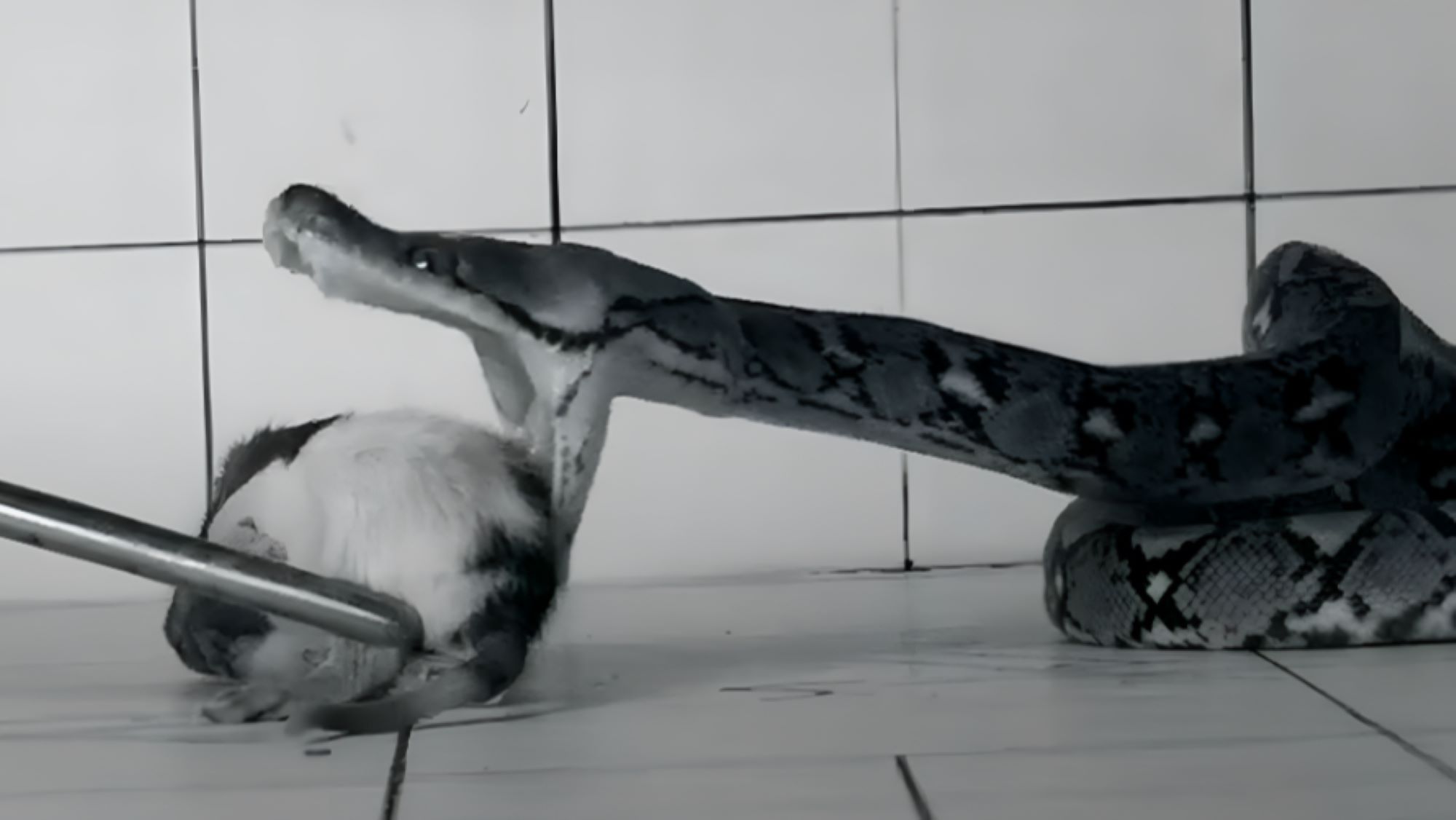Slow-motion footage of snake attacks reveals surprise discovery about how they kill
Using high-speed video, herpetologist Bill Ryerson filmed snakes attacking dead rodents and found species fit into two broad categories: strikers and lungers.
Video footage of the moment snakes launch themselves at their prey reveals that the reptiles are either "strikers" or "lungers" — and the difference between the two is rooted in their teeth, new research has found.
Strikers attack at lightning speed from above, impaling their prey with needlelike teeth at the front of their lower jaw before wrapping their head over and around to inject venom with their fangs, or to squeeze the animal to death. These snakes include many boas, such as boa constrictors (Boa constrictor), and pythons.
Kingsnakes, pine snakes (Pituophis melanoleucus) and some ground boas are lungers, according to Bill Ryerson, a senior lecturer in anatomy at Cornell University's College of Veterinary Medicine. Lungers "strike more slowly and don't open their mouths as wide," Ryerson, who presented the new research at the annual meeting of the Society for Integrative and Comparative Biology earlier this month, told Live Science in an email. "They make contact with both jaws simultaneously."
Herpetologists have long focused their attention on snakes' fangs, which are teeth modified to inject venom, but they have largely ignored the rest of the teeth. "We just assumed they are all the same and will not tell us much about the evolution of snakes," Ryerson said.
But Ryerson's work suggests otherwise. While a snake's other teeth may not catch our eyes quite the same as its fangs do, they are still important in how snakes evolved to attack and kill, he said.
Related: Watch 2 giant, highly venomous black mambas fighting in someone's backyard
"I've done quite a bit of work in the last few years on the striking behavior of snakes and I began to wonder how those teeth function in the ultrafast striking, especially for the non-venomous snakes like our boas and pythons," Ryerson said. While peering into the mouths of dozens of preserved specimens, Ryerson found that some snakes, such as boa constrictors, have narrow, upright teeth in their front lower jaw, while others, including kingsnakes, have stouter, curved teeth.
Sign up for the Live Science daily newsletter now
Get the world’s most fascinating discoveries delivered straight to your inbox.
Then, Ryerson used X-rays to scan the jaws and teeth of almost 70 snakes from 13 species, Science reported. Using high-speed video, he also filmed snakes charging at dead rodents that he wiggled in front of them to analyze the snakes' striking behavior.

His observations neatly sorted into two categories, Ryerson said. Strikers showed more variation in the size and shape of their teeth, which became shorter, broader and more curved toward the throat. Lungers, on the other hand, had broad, curved teeth all along their upper and lower jaws.
The fact that snakes have different dentitions wasn't so surprising, as it was "unlikely that all the teeth would be the same across all species," Ryerson said. "However, I was surprised by how well the shape of the teeth corresponded to the strike behavior."
Countless factors influence the anatomy and behavior of snakes, so Ryerson expected a blurrier picture, he said. "It's really made me excited to try and sample more broadly to see how well this pattern will hold up," he added.
More specialized snake species, such as those that live in trees or underground, may not fit into either category, Ryerson said.

Sascha is a U.K.-based staff writer at Live Science. She holds a bachelor’s degree in biology from the University of Southampton in England and a master’s degree in science communication from Imperial College London. Her work has appeared in The Guardian and the health website Zoe. Besides writing, she enjoys playing tennis, bread-making and browsing second-hand shops for hidden gems.










